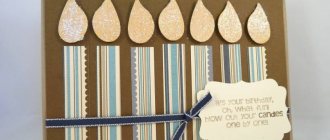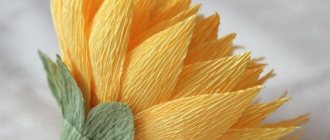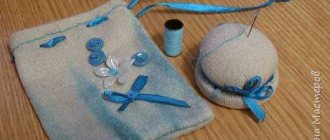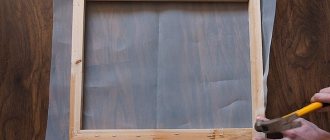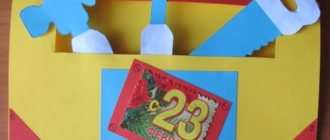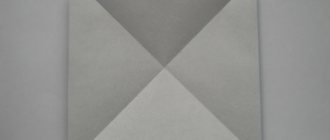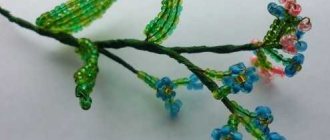Are you bored with all the board games you have at home? Or your child has grown up, and you understand that he needs something more interesting. You can go to the store and buy another desktop. Or you can come up with your own. A student from Lehigh University (USA) named Frank wrote on his blog how he did it. Based on his story, "Mel" wrote a step-by-step guide to creating your own game.
Choose your game type and come up with rules
Before you start working on your board game, you need to decide what type it will be. First, you can look at what games already exist. Wikipedia has a list of different games that have ever existed. Role-playing and card games, intellectual, psychological, economic, quizzes and games for the development of fine motor skills.
Decide what age this game is for. Young children will enjoy something fun, noisy, with simple rules, while adults will be interested in more complex, tactical games.
Choose a topic: history, banking, ecology, travel. Decide what the winning conditions will be: score points the fastest, reach the finish line on the map, answer questions correctly, collect artifacts, or, for example, get rid of all the cards. There may be several conditions, or there may not be any at all: for example, the quiz can be ended when everyone gets tired of playing.
For inspiration, you can choose any category of existing board games or combine several favorite games into one. For example, create a hybrid of the economic game Monopoly and the detective game Cluedo. Take the rules that seem fair to you and abandon the ones that have always irritated you. Perhaps you always wanted the game to be easy to get rich or, conversely, impossible to reach the finish line.
And a board game is a great way to simply explain complex processes. If your children have been asking to see what you do at work for a long time, but you always thought they wouldn’t understand, try playing with them about your work.
Make a sketch
It doesn't matter whether you're good or bad at drawing: a sketch can be as detailed as it is simple. Draw a rough diagram of the game: what the playing field, chips, cards will look like. Check if your game mechanics work. Cut out conventional cards and chips, try to play, experiment with the rules. It will be more difficult to correct errors later.
Write down the rules you come up with. Think over a unified visual design: style, primary colors, fonts. Come up with a logo and name.
Make a playing field
Depending on the type of game, the field can be a simple track with numbers or a complex map, with special rules for each area. The playing field can be an element of the game or simply help record players' progress and count points. The main thing is that the map should have stopping places for chips and a given direction: where the players are coming from and where they are going.
For the simplest field, the tools that a schoolchild has in his pencil case are enough - pens, pencils, felt-tip pens - and a large sheet of paper or cardboard. The paper board won't last long, but you can draw it a little differently each time to keep the game interesting.
If you know how to work in graphic editors - Adobe Illustrator or Inkscape are suitable - you can create a map on your computer. Large format printing on thick paper can be ordered from photo workshops.
Make chips
After the playing field is completed, you need chips that will move along it. They can be made in different ways.
Take chips from another game
The first option, as always, is the simplest. There is no need to reinvent the wheel - you already came up with the concept, rules and, perhaps, paid money to print the playing field. If chips from previously purchased ones are suitable for your game, that’s just great. Another option is any small items you can find at home. These could be caps, coins, Kinder Surprise figures, whatever.
Origami
This is the case when you can simultaneously learn something new, practice the notorious fine motor skills and show your individuality. Creating tiles can be part of the game: prepare some diagrams and squares of colored paper, and at the beginning of the game, have everyone choose who they want to play for and make a colored crane, elephant or steamboat.
Polymer clay
Polymer clay is a plastic material that hardens in air or when heated. It is often used to make handmade jewelry and souvenirs. This clay is also perfect for small figurines: you can make a durable figurine of any shape and color.
Instructions
To transfer an image, follow the steps below:
- We select an image and, placing tracing paper on it, draw out all the lines with firm pressure, using a black acrylic pen.
- Now turn the tracing paper over and place it face down on the sheet of paper on which you want to transfer the image.
- Press tightly and pass over it with a hot iron.
- Now we remove the tracing paper and additionally draw insufficiently clear lines.
- The image is ready.
This method is used for simple pictures that do not contain a lot of complex details. Now you know how to transfer a drawing from paper to paper in a simple way. Once you try it, you can move on to others.
Tic Tac Toe
If you are interested in games for two at home, then pay attention to tic-tac-toe. This exciting and very simple game is familiar to everyone since childhood. During breaks at school, many people drew the playing field in their notebooks and fought with their neighbor on the desk. For even a small child to like the game, it needs to be improved a little.
Photo: pinterest.ru/plaidcrafts: UGC
To play you will need to create:
- Playing field.
You can draw it on a piece of paper or cardboard. But it will be much more interesting if you place the field in an unusual place. For example, on a wooden block. A field sewn from bright felt fabric looks unusual. Another idea is to place the game board on the refrigerator and use magnets instead of chips.
- Chips for the game.
The simplest thing is to make or sew chips in the shape of crosses and toes. But this is trivial. Try to create unusual figures - hearts of 2 colors, ladybugs and daisies. You can also use multi-colored buttons or pebbles with figures drawn on them to create chips.
The rules of the game don't change. Someone starts and places their chip in one of the cells. The second player goes next. The winner is the one who manages to collect the figures in three squares in a row vertically, horizontally or diagonally. Good luck!
Instructions
To master this method, follow these steps:
- We apply a transparent film to the original image, which shows squares of the same size.
- We apply the same cell on a blank sheet of paper if the picture is reproduced in the original. How to transfer a drawing from paper to paper when the image size needs to be changed? When increasing, the size of the squares becomes larger, when decreasing, respectively, smaller.
- Now all you have to do is move the image across the cells.
- When the picture has been completely transferred with a pencil, you can start coloring.
Now you know how to transfer an image from paper to paper. Let's look at other surfaces.
Replacing chips
If there is no time for the creative process, but you really want to play, children use multi-colored buttons instead of chips. You need to select bright fittings that are suitable in size and have strong differences in color.
The creative potential of children is very great; they find a lot of “substitutes” instead of chips:
- bright caps (from pens, felt-tip pens);
- kinder surprises;
- candies;
- pebbles;
- chessmen;
- multi-colored erasers;
- shells;
- large beads;
- chestnuts.
To make the game even more interesting, creative parents or children think about how to make chips with their own hands so that they are interesting and related to the general theme of the game.
Body as a basis
A tattoo is the highlight of one’s appearance, but not everyone decides to put a design on the skin, realizing that this decision is made for life.
For people who are afraid of such an act, but want to decorate their body with a beautiful image, temporary tattoos are an excellent solution. To learn how to transfer a design from paper to leather, you need to study the following information. The main stage is to clearly draw the contours of the future image. The picture can be applied to the body using:
- carbon paper;
- tracing paper.
Second way
It is based on the use of tracing paper. You need to do the following steps:
- We draw the drawing itself with a helium pen.
- Disinfect the skin and apply soap.
- We apply tracing paper and trace the contours with a sharp object.
- Now let's paint over the drawing.
If you do decide to apply a permanent design to your body, approach this very carefully. The main thing is to choose a good salon, undergo an allergy test and check that all instruments have been disinfected.
How to transfer a drawing from paper to glass
To work, take an image with good contours and a roll of cling film. To transfer, you need to purchase a felt-tip pen - a marker for glass; it fits well and is easily washed off the surface.
Instructions:
- We take the film. Its size should be slightly larger than the drawing itself. The film is attached to the surface, which prevents the picture from getting lost.
- The image is placed on film and outlined thinly and very carefully.
- Now the film is carefully transferred with the front side to the previously prepared surface. Preparation consists of degreasing its front side. Make sure that the film is completely adhered to the glass and get rid of wrinkles and bubbles.
- For a clearer transfer, we trace the image again along the contour with any sharp object.
- It's time to get rid of the polyethylene. We do this very carefully so as not to smudge the drawing. If there are inaccuracies somewhere, now is the time to correct them.
- Now we draw the outline. This can be done using acrylic paints and a brush.
- After everything has dried, carefully remove traces of the marker using cotton swabs dipped in liquid.
- Inside, the image is filled in any way. If the technique is stained glass, then everything is poured along the contour.
- After drying, the image can be baked or varnished for a longer service life. It all depends on where this item will be used.
Board games
Children and parents love board games and are happy to devote their leisure time to family games. However, over time, after prolonged use, cardboard play accessories begin to scatter and get lost. Especially in an incomprehensible way, the smallest and most necessary details - chips - disappear. Without chips, the game cannot begin or continue. The chip characterizes each player, acts “with the hands of the owner” and “instead” moves across the playing field. The loss of such a part does not mean a tragedy, because you can easily make chips like store-bought ones.
Before making chips, you should pay attention to what board game they are being made for. To play poker, you need to draw multi-colored circles with numbers in the middle; to play backgammon, round cardboard pieces of two colors are enough. “Walkers” become more interesting if, instead of faceless chips, the “participants” become thematic chips in the form of people, animals, emoticons and other interesting characters.
Not so long ago, before the development of the Internet and computer toys, both adults and children played board games in their free time. They were not as popular as they are now, but with their help people communicated live, in addition, they could while away any evening and diversify friendly gatherings. Today, the Homius editors offer several unique master classes on making board games with your own hands.
How to transfer a drawing from paper to wood
To see your favorite image on a wooden base, you just need to follow the steps below.
To work you will need:
- drawing printed on a laser printer;
- wooden plank;
- acrylic gel medium;
- flat tool for leveling the pattern;
- paint and rag;
- soft paraffin or matte glue;
- 2 brushes.
Instructions:
- Selecting an image. It should be a design that will look beautiful on a wooden base. To give some resemblance to the vintage style, it can be processed in special programs.
- The image is printed only on a laser printer, this is the main condition.
- A smooth wooden base is selected.
- Now apply an even layer of gel medium. It is this that will help the image be transferred to the prepared surface.
- We place the drawing with the front side facing the base. At the moment of connection, bubbles appear, which should be smoothed out if possible.
- The work is finished for today, leave everything overnight and continue tomorrow.
- It's time to remove the paper. To do this, you need to wet it and rub it with your fingers. Right now you are witnessing a miracle - when you remove the paper, you can see how the image remains on the wood.
- Now you can use wood paint. Monitor the amount so that the image does not darken.
- Now apply liquid paraffin. If necessary, the last two steps can be repeated after the first layer has dried.
Other basics for image transfer
Metal is a base that is also suitable for such “tricks”. For accurate and fairly accurate work, two axial lines are drawn on it or the corners of the image are marked. Now let's look in more detail at how to transfer a design from paper to metal.
The most common is to use carbon paper for this. Since metal is a very hard material, it is coated with white or light paint. The transfer process begins after the varnish has completely dried, which is applied just before the start of the main work.
Instructions
This method requires compliance with the following rules:
- The pattern is very tightly attached to the product. You can use a soap solution for this.
- Many craftsmen use a canter for this work. With it, the image turns out to be very accurate - almost jewelry work, which, however, takes a lot of time and requires some preliminary training.
- The instrument is taken with three fingers, resting on the ring finger, which serves as a kind of spring. The emboss is located 2-3 mm from the design, its light strokes form a dotted line - the main outline of the image is drawn. The smaller the detail of the picture, the more densely it breaks through.
- When all the lines have been transferred, you can wash off the paint.
- The image can be varnished.
Now you know how to transfer a design from paper to paper, to leather, to glass, to wood and to metal. Go ahead - get your tools, and good luck in your endeavors!
History of the paper fortune teller
The origami oracle's popularity peaked in the 1990s, but today interest in it is returning. The exact origin of the model is unknown. British origamists believe that Europe became acquainted with the fortune teller back in the 17th century, but the first descriptions with the diagram appeared only three centuries later. In 1928, the model was mentioned by origamists from Dover - William Murray and Francis J. Rigney in the pages of the book “Fun with Paper Folding”. True, the authors saw in the elegant design a salt shaker or a stand for sweets. They flipped the model over, turning the tops into “feet” and suggested pouring food into each of the finger compartments.
But an even more interesting role was assigned to the fortune teller in Asian countries, where she most likely came from. Malaysians used this type of origami to catch so-called body lice, protecting their fingers from bites with paper. During the First World War, the idea was borrowed by British soldiers. They also came up with the name “cootie” for paper traps, a derivative of the Malaysian kutu, which means “louse”.
Only by the middle of the 20th century did the model turn into a fortune teller, known to every schoolchild. It first spread among British and American teenagers, who came up with the basic rules of the game. The presenter was asked questions, and then together with him they looked for the answer from the paper oracle. Over time, the “fortune-telling boom” covered almost the entire globe. It is noteworthy that in English-speaking countries, the fortune teller is still called a cootie catcher, preserving its amazing history for future generations.

